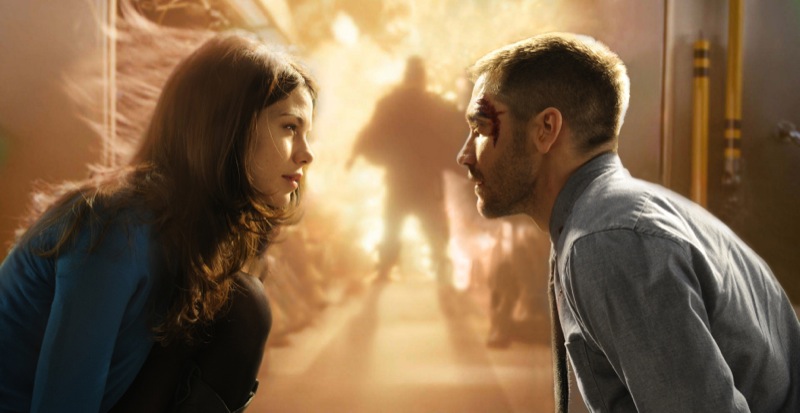No More Arrested Development After Season 4 ⇒
Greg Bensinger reporting for The Wall Street Journal:
At an investor conference Monday, Chief Executive Reed Hastings said the show would be a “one-off” and “non-repeatable” event for the Los Gatos, Calif., company.
It hasn’t even “aired” yet.
Some questions come to mind: How the hell does Netflix measure success? Or does it just not care? Would another network have killed the prospect of another season before releasing a single episode?
The bigger question, I think, is whether or not Netflix actually has the power to negotiate keeping a show as ambitious and sprawling as Arrested Development in production. Some of the biggest players are movie stars now; do they really want to keep on making a direct-to-video sitcom?1
I’m getting the feeling 2013’s original content rollout from Netflix is less “the future” and more, in the words of Hastings, a “one-off.”
-
What would you call it? ↩︎
Richard Brody on MacFarlane's Oscars ⇒
Richard Brody on his Front Row blog:
In the midst of the year-end Oscar-season hype, anticipating the new set of awards even more than looking back at the last one, I kvetched that the least important event was “the Oscars, which function in a giddy parallel fantasy world of cinematic values.” I didn’t suspect how right this hyperbole would prove.
As ever, his insight is excellent. I was planning to put together some thoughts on what I thought was an abysmal bit of live television, but Brody took care of the major points.
CriticMarkup ⇒
CriticMarkup, or CM for short, is a new plain text editing syntax from Gabe Weatherhead and Erik Hess. It’s a pretty darn neat way to go about editing a plain text document…any plain text document.
Could be useful for collaborating on Fountain screenplays as well.
I’m working on some new toys for using CriticMarkup now. {~~Stay tuned~>Come back soon~~}.
HBO GO to Apple TV is Go ⇒
Ina Fried reports for All Things D that HBO’s Eric Kessler just announced HBO GO streaming to Apple TV:
Speaking at our D: Dive Into Media conference on Tuesday, HBO’s Eric Kessler said, “effective today, we will be enabling AirPlay” for HBO Go.
The feature is being added today as an update to the HBO Go iOS app and for Cinemax’s MAX GO App.
Coming to Apple TV as an app eventually as well. I think I need to wait until they release another Apple TV, but otherwise I’m sold. Bye bye, Roku.
Copy-editing note: It’s still spelled HBO GO. I don’t understand how All Things D managed to get MAX GO right when MAX isn’t even an initialism but an abbreviation (of a portmanteau, mind you). Look at the text on the HBO GO iOS icon; look at all the copy on the company’s site. It’s GO, not Go.
Melton Barker Was Either a Filmmaker or a Con-Artist or Both ⇒
Amanda Petrusich at the New York Times shares the tale of Melton Barker, a traveling filmmaker who wandered the U.S. for forty years making the same film with kids in different towns…for a fee.
These days Barker’s racket might seem archaic (anyone with a laptop and a camera can get on YouTube in minutes), but let us not forget Rebecca Black, the then-13-year-old aspiring pop star whose mother paid $4,000 to Ark Music Factory, a songwriting and video production company, to create a clip for “Friday,” one of the most inescapable (and mocked) memes of 2011.
The illusion of fame has always been a hot commodity.
You can view Barker’s films (or film, rather) here, but the site is pretty sluggish today.
(via Boing Boing.)
Happy Birthday, Fountain
One year ago today, Fountain, the plain text screenwriting syntax, was first introduced to the world. What a year.
Stu Maschwitz kicked things off back in the summer of 2011. I edged my way in with this tweet:
That was how I introduced myself to Brett Terpstra and Stu. At the time, it felt like one of those things that would float out into the ether and disappear. Only Brett and Stu were paying attention.
Before I knew it I was in contact with Stu, Brett and Martin Vilcans, who wrote the excellent Screenplain. Brett got Screenplain working with Marked and I dove into my Cole & Haag manual to find decent measurements for the CSS.
The months of emails back and forth were inventive and thoughtful. This small little group (it kept growing) of folks from around the world were collaborating to build a rock solid syntax that, if you ask me, revolutionizes the way screenwriters write.
Last January Stu sent out an email with a nice little surprise: John August would be contributing to the syntax and the project would now be called Fountain. Then, on February 8th, 2012, the Fountain site went live, I updated the Marked package, everyone wrote an introduction and this scrappy syntax started getting the attention it deserved. John Gruber even gave it a nod.
Fountain is constantly growing. Phenomenal discussions take place on the Glassboard, apps are adding support all the time and more writers are adopting it (ahem, David Wain).
Highland is still in beta but available; it’s an amazing tool that makes writing with Fountain a reality for professional screenwriters. Fountain for Sublime Text will see some updates soon and I hope to revisit Fountain for Marked eventually. One thing I’d like to see in the coming year is more tools and workflows for collaborative writing (I’ve got some ideas on that note).
I’m privy to a few other surprises coming down the pipe for Fountain’s second year, but I don’t want to spoil anything. Suffice it to say: big things await.
So happy birthday to the best damn screenwriting syntax on Earth. Keep writing.
Austin's Traffic is Uniquely Terrible ⇒
Ginger Goodin, of the Texas A&M Transportation Institute, in a Q&A at Texas Monthly:
In Austin, by contrast, we have a core area around downtown—[The University of Texas], the Capitol—where 18 percent of the jobs are located. That’s the fourth-highest percentage in the country, behind New York, Washington, D.C., and New Orleans.
Traffic is unpredictable in this town. It’s like a new adventure when I hit the road each morning.
Final Body of the D16 Digital Bolex ⇒
This body may look similar to the one we had designed in March, but really it’s a completely new camera.
That’s a good looking digital motion picture camera.

Digital Bolex
Further Reading:
- I interviewed Joe and his partner Elle Schneider last July. They’ve had some setbacks since but it’s nice to see the camera is progressing and nearly complete.
Duncan Jones Tweets Details of Source Code

Source Code Still
Yesterday, director Duncan Jones live-tweeted his most recent film, Source Code1, as it played on BBC’s Channel 4 in the UK. He answered viewer questions, divulged some of his technique and pointed to the true story one of the film’s characters is based on.
The whole stream is a fun (and spoiler-ridden) read. I’ve collected the whole thing in a Storify stream, but below you can find a selection of my favorite tidbits. Perhaps worth bookmarking for the next time you watch the film.
On Plato:
On Sam Beckett’s cameo:
Scott Bakula plays the voice of Colter’s father.
Quan-Tomb:
On the 8-minute time limit:
On Jeffrey Wright’s exposition:
On product placement:
On set design:
On making a fake train station and van:
On that villain:
The Radioactive Boy Scout2 is actually the name of a book by Ken Silverstein expanded from this 1998 article in Harper’s. It tells the story of David Hahn, an American Boy Scout who nearly build a homemade nuclear reactor when he was 17. The Nuclear Boy Scout is the TV documentary Jones is referring to. It aired on BBC’s Channel 4 in 2003 but is yet to air in the US.
That ain’t bullet time at the end:
Further Reading:
- I reviewed Source Code when it premiered at SXSW in 2011 and interviewed Jack Gyllenhaal about the role.
- Probably my favorite Source Code-related out there is Eric Kohn’s physicist father explaining that science in the film basically checks out.
- Bookmark the full Storify stream if you want to time-shift Jones’ commentary.
Le Hashtag ⇒
In French at least, the hashtag is no more: make way for the officially sanctioned mot-dièse, or ‘sharp word’.
And they call a Facebook Poke a “Finger-bop with cheese.”1
-
Sorry. ↩︎